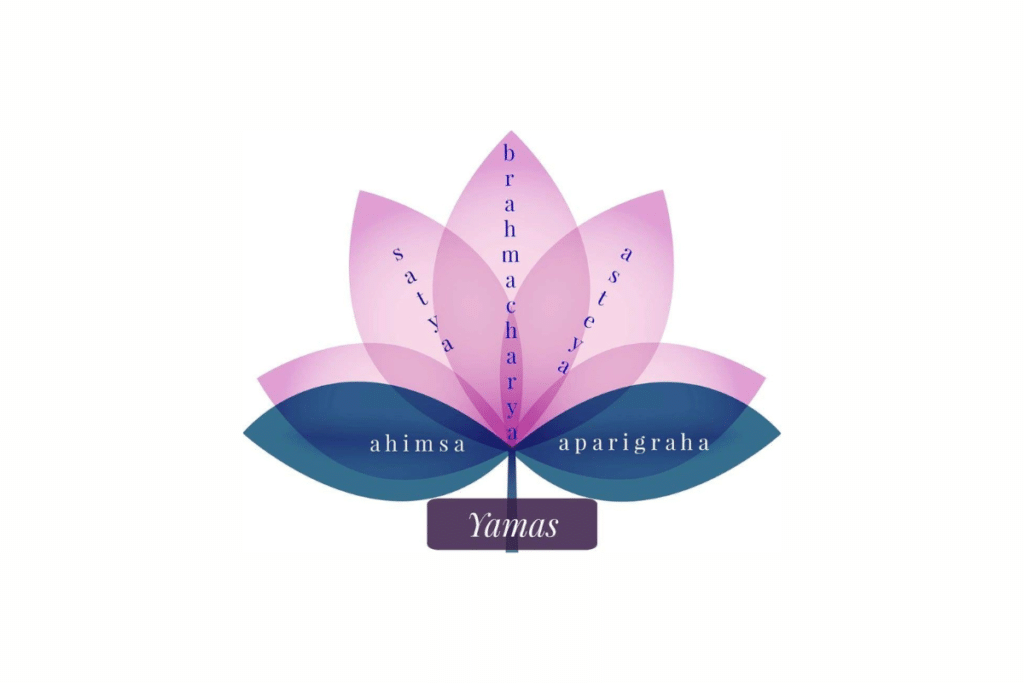Karma Yoga: 3rd Branch of the Yoga Tree of Enlightenment

This article is the fourth in a series of seven articles explaining all about the yoga tree and its 6 branches. This article addresses the third branch of the yoga tree – Karma yoga. Catch up with the first article here, the second article here, and the third article here.
What is Karma Yoga?
Karma yoga is a dedication to service-based action. It is known as the yoga of action or of selflessness. Karma yoga means putting yoga philosophy into action in our everyday lives. You can live this by bringing yoga off your mat into your daily life by participating in humble selfless service and seeking ways to be part of something bigger than yourself.
How Does it Relate to the Law of Karma?
The word karma simply means ‘action.’ Law of Karma states that the seeds we sow due to our thoughts, words, and actions will affect our future circumstances, both in this life and in future incarnations. Equally, the quality of our life today is a consequence of our actions in the past and in our previous lives.
This philosophy may sound a bit mystical and far-fetched, but it is simply based on energy. Every thought, word, and deed, like everything else, is energy. Humans are basically huge energy conductors and so whatever energy you surround yourself with will affect your own energy field.
As we know from the foundational principles of the Law of Attraction, like attracts like. If you are immersed in negative energy this will lower your vibrational frequency and cause you to attract lower frequency things, people, and situations into your life, which could be viewed as ‘bad luck’ or ‘bad karma.’ Your spirit or soul is basically pure energy and will absorb the energetic imprint of all your lifetimes, which is how your actions in previous lives can affect this life, and equally, your actions in this life will affect your future lives.
Karma Yoga as an Extension of Ethics
Yoga philosophy such as Patanjali’s Eight Limbs of Yoga system is rooted in ethical behavior. The yamas and niyamas create a moral code to live by in order to progress further along the path towards Moksha (liberation). By living your life according to these guidelines, you will naturally be creating ‘good karma’ – raising your vibrational frequency and attracting positive circumstances into your life. Karma yoga takes these ethics and uses them to make a difference in the world.
Ahimsa
If we look at the first yama – ahimsa, we can see that to practice this principle in the context of Raja yoga (the branch of the yoga tree that is based on Patanjali’s Eight Limbs of Yoga system), you would avoid causing harm to other living beings and the planet. To take ahimsa into the context of Karma yoga, you would not only avoid causing harm, but you would also actively seek out opportunities to do the opposite of harm; helping others and the planet. This action would be an expression of Karma yoga.
Satya
The yama of satya is the restraint from being untruthful. This applies to lies told to others as well as lying to yourself. Using satya to inspire your Karma yoga practice might mean that you commit to expressing your truth in ways that will benefit others, for example, sharing about your struggles to someone who is currently going through a similar issue. It could also mean being truthful with yourself about a problem you have been avoiding and looking at the real reasons behind your procrastination.
Asteya
Asteya means refraining from stealing. In a Karma yoga practice, you would do the opposite; seek out ways to practice selfless, open-handed generosity. There are countless ways to practice generosity in our everyday lives, and it doesn’t need to be related to giving money. Not everyone can do that, but most of us can afford to donate an item or two to a food bank or spare a little of our time to volunteer at a charity or help someone in need.
Brahmacharya
Brahmacharya means refraining from sense indulgence and treading the middle way between excess and indulgence. It relates to anything that has an intoxicating or addictive effect on the senses, such as alcohol, sex, drugs, junk food, overeating in general, and overconsumption of news and media. Brahmacharya as Karma yoga could be focused on finding balance in your life between your work commitments, home life, hobbies, self-care, and social activities. It also means that the energy you save from being excessive in any area can be used to help others.
“Those who abstain from action while allowing the mind to dwell on sensual pleasure cannot be called sincere spiritual aspirants. But they excel who control their senses through the mind, using them for selfless service.”– The Bhagavad Gita
Aparigraha
Aparigraha means refraining from grasping. Essentially it is practicing non-possessiveness and releasing attachments to people, objects, places, and situations. Refraining from becoming emotionally dependent upon outside influences is a supreme act of selfless service because it means you are much more able to go with the flow and help others without being attached to the outcome or finding it difficult due to a conflicting attachment. Additionally, you reduce the risk of co-dependency or relying on other people for validation, which is a much more compassionate and respectful way to act in your relationships.

How To Practice Karma Yoga
Karma yoga is one of the easiest branches of yoga to practice. We have countless opportunities every day to offer help, service, and generosity to others. How you embody this depends upon your available resources. Resources don’t just mean money; they include time, belongings, words, actions, thoughts, skills, and anything else you have that you can share.
If you are short on financial resources, you can practice karma yoga by giving your time to volunteer at a charity organization or sharing your skills with a non-profit group such as a youth project or after school club.
You could go on a litter pick or beach clean to help the environment where you live. If you don’t have time for activities like this, you can ensure that you recycle all of your waste appropriately and donate all of your unwanted and unused possessions to charity instead of selling them.
Ways to practice Karma yoga include:
- Volunteering
- Donating to charity
- Helping a friend, colleague, or family member in need
- Teaching or sharing your skills for free
- Performing a random act of kindness
- Beach cleans and litter picks
- Running errands for a housebound neighbor
- Giving to a food bank
- Recycling properly
- Practicing active listening
- Baking or cooking for a sick or grieving friend
- Sharing your favorite charities and small independent business on social media
Any act of selfless service is considered Karma yoga and can help you to consciously create a life that is not driven by selfish action. In dedicating your life to the service of others, you think and act from a place of kindness and compassion.
Karma Yoga and Moksha
The Yoga Tree consists of six branches of practice – six different paths that lead toward the same goal of enlightenment and Moksha, liberation from suffering, and union with the Divine. The path of Karma yoga moves you towards this goal by freeing your mind from the trappings of the ego, allowing you to come closer to union with the Divine.
Karma yoga helps you to see the one-ness of the universe and that when you act selflessly for the benefit of others you also benefit yourself because you are connected to everyone and to Divine cosmic consciousness. There is no separation between anything. You have the same universal energy within you as everyone else.
Your eternal energy, the spirit or soul we discussed earlier that carries the imprint of your karma is universal cosmic energy. You are everyone else and you are the Divine. This realization on an experiential level is the goal of yoga and most other Eastern spiritual philosophies. It is not enough to know it intellectually; enlightenment and Moksha happens when we know it intrinsically from our own personal experiences.
Karma Yoga in Relation to Other Branches
Although each branch is separate, they all intertwine with one another and you will find aspects of them in each other. For example, Raja yoga contains Hatha yoga as it is based on Patanjali’s Eight Limbs of Yoga system and Hatha yoga in one limb.
Karma yoga contains elements of Bhakti yoga because acting unselfishly for others is one way to honor the Divine. In essence you are doing God’s work, which is an act of sacred devotion. This principle is outlined in chapter three of the sacred Hindu text, the Bhagavad Gita, when Lord Krishna advises Arjuna to practice Karma yoga to help him achieve Moksha.
“At the beginning, mankind and the obligation of selfless service were created together. Through selfless service, you will always be fruitful and find the fulfillment of your desires: this is the promise of the Creator.
Every selfless act, Arjuna, is born from Brahman, the eternal, infinite Godhead. Brahman is present in every act of service. All life turns on this law O Arjuna. Those who violate it, indulging the senses for their own pleasure and ignoring the needs of others, have wasted their life.
But those who realize the Self are always satisfied. Having found the source of joy and fulfillment, they no longer seek happiness from the external world. They have nothing to gain or lose by any action; neither people nor things can affect their security.
Strive constantly to serve the welfare of the world; by devotion to selfless work one attains the supreme goal of life.”– The Bhagavad Gita
Giving for Giving’s Sake
It is important to remember that Karma yoga is giving for giving’s sake. When you engage in your acts of service, there shouldn’t be any expectation of reward or recognition. I think giving without expecting something in return is the easier of the two – most of us do this regularly, especially if we are volunteers or parents!
Giving without expectation of recognition is harder. It is human nature to want to be acknowledged and thanked for doing a good deed. This is where the work lies, and it is part of what makes Karma yoga such a fantastic personal development technique. In learning how to give without expectation of recognition, you begin to control your ego. Learning how to master the ego is one of the most fundamental aspects of spiritual advancement and personal evolution, and a tenet of each branch of the Yoga Tree and most other spiritual philosophies.
Conclusion
Karma yoga is a beautiful addition to your spiritual toolkit and an excellent complement to other branches of the Yoga Tree. In practicing Karma yoga, you are beautifully expressing the ethical observations of Raja yoga, you are engaging in the devotional action of Bhakti yoga, and you are making the world a better place in the process. You will enjoy the effects of Karma yoga almost immediately because no matter if it is part of a spiritual practice or not, it always feels good to give.
As always, we are here to answer any questions you may have on Karma yoga or spirituality in general. Please share your questions or comments below or join us in the Sacred Circle – a safe space for women of all walks of life and stages of development to come together and share their stories. It is a beautiful collective of like-minded Goddesses who share common goals – seeking the truth, fulfilling their potential, and making the world a better place. We would love to connect with you there.







[…] Karma yoga (service-based action – the yoga of selflessness) […]
[…] is often grossly misunderstood. In Sanskrit, karma simply means ‘action.’ When spiritual philosophies talk about karma, they do not refer to fate and […]